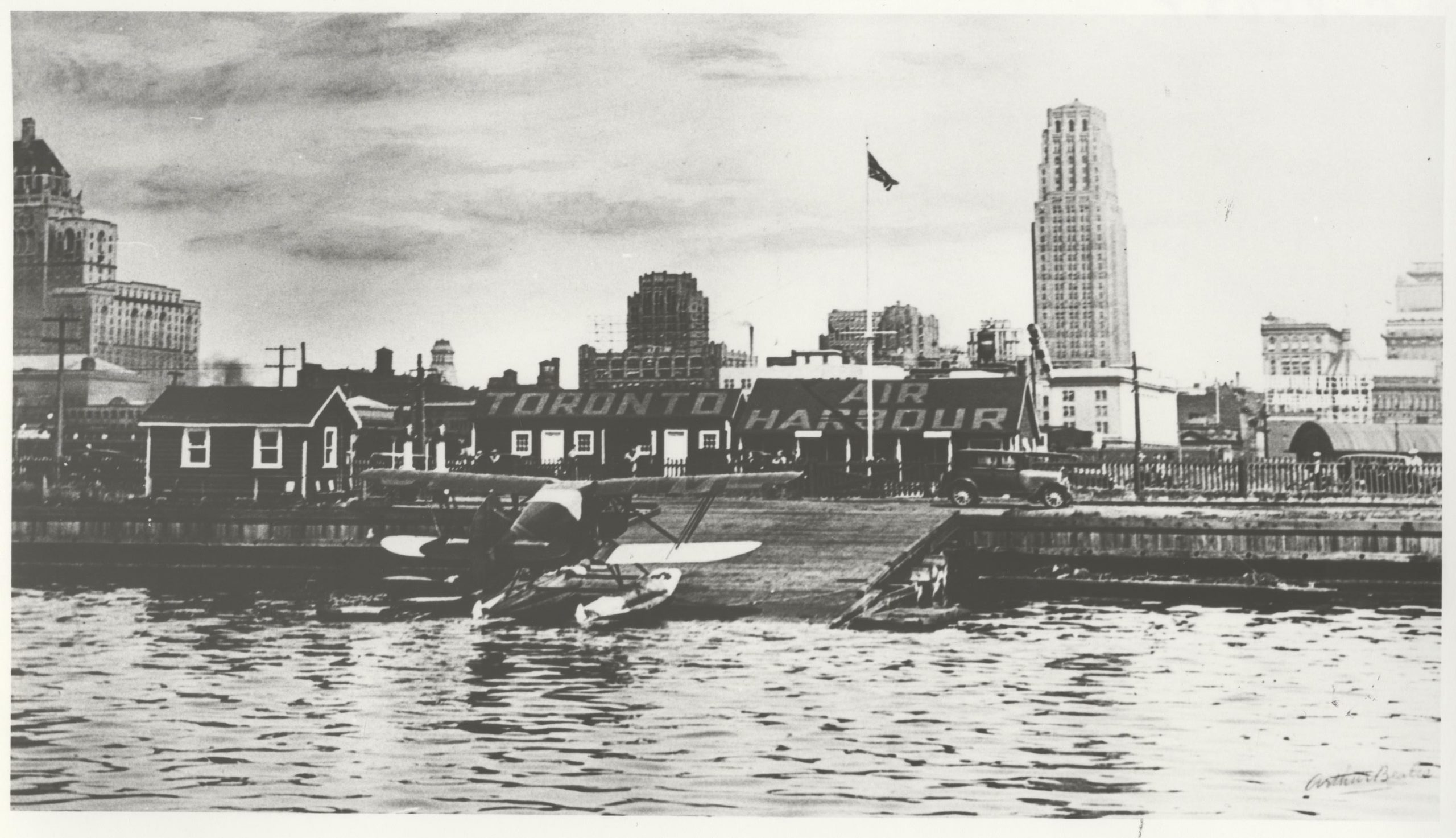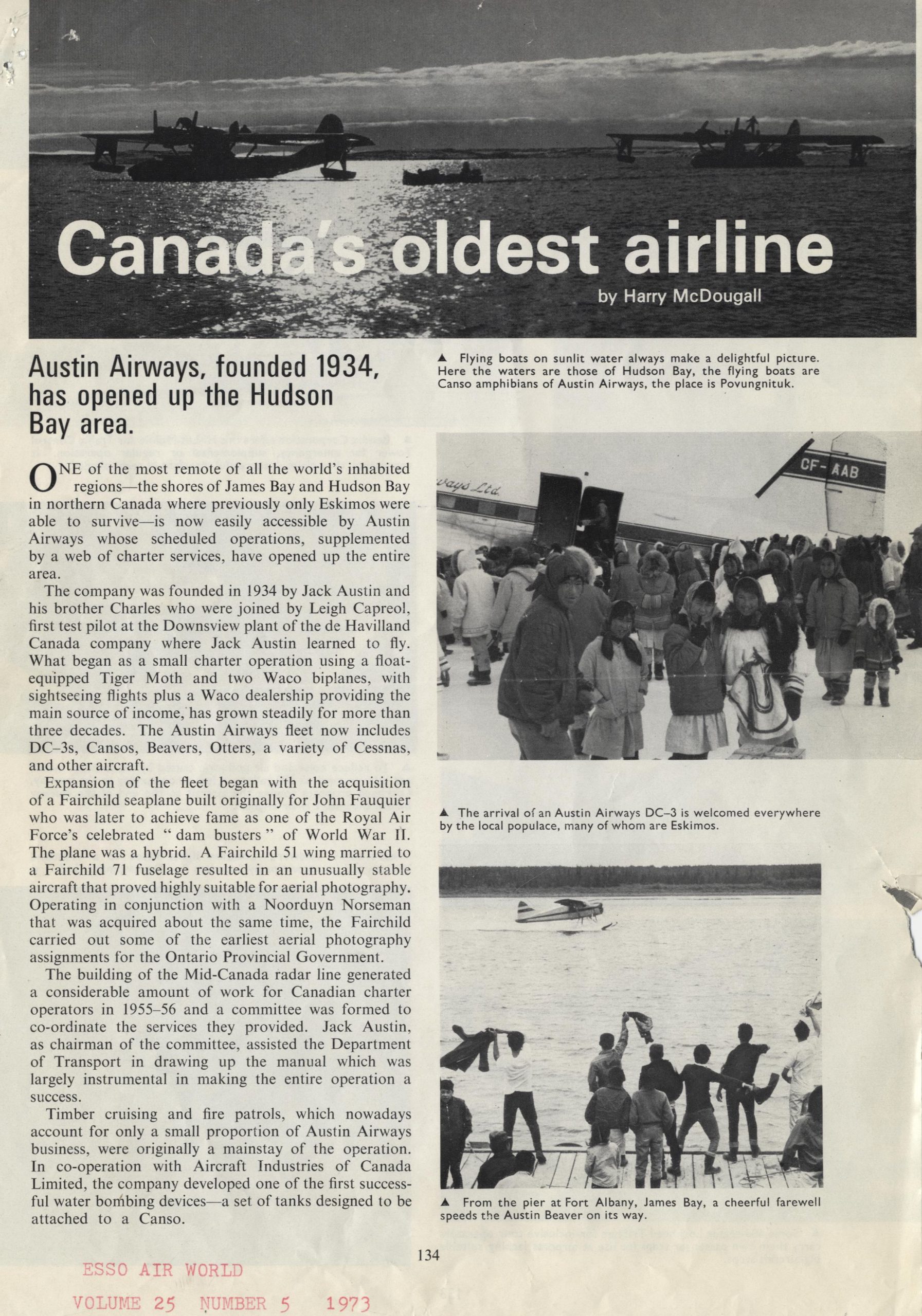John Alexander McDonald Austin

Nickname: Jack
Birth Date: September 30, 1912
Birth Place: Renfrew, Ontario
Death Date: December 1, 1984
Year Inducted: 1976
Awards: The McKee Trophy
During a forty year career he was actively engaged in commercial aviation as a pilot, engineer and administrator. His dedication to purpose resulted in Austin Airways bringing responsible air service to many communities adjacent to James Bay and Hudson Bay, without government assistance and despite adversity, contributions which have been of outstanding benefit to Canadian aviation
The Early Year
John Alexander 'Jack' Austin, B.Sc. was born in Renfrew, Ontario, on September 30, 1912, attended school there and graduated from the University of Toronto in 1934 with a degree in applied science and engineering. That same year, after learning to fly at de Havilland Aircraft of Canada LTD (DHC), he entered a partnership with his brother Charles to form Austin Airways Limited. They were joined for a time by Leigh Capreol, who was DHC's first test pilot and Austin's flight instructor.
Austin Airways Limited
The company began with three small aircraft, two Waco biplanes and a Tiger Moth. They operated from Toronto Air Harbour during the summer months and moved tot he Toronto Flying Club field for winter operations. The following year the company was incorporated by federal charter, purchased the assts of Eclipse Airways at Chapleau, Ontario, and then opened a new base at Sudbury, Ontario. The company's first flights were made to the Little Long Lac mining area to bring prospectors into that area.
Austin obtained his Air Engineer's Licence in 1936, the year the company began flying forest fire patrols for the Government of Ontario. Also that year, they participated in the Moose River Mine rescue mission in which equipment was flown in to a gold mine in Nova Scotia where three men were trapped below ground. As the company expanded, a base was established at Temagami, Ontario, and a flying school opened at Sudbury, Ontario. Many of the students from this school went on to serve with the Royal Canadian Air Force (RCAF). One of their well-known students was Thurston 'Rusty' Blakey, who became a long-time pilot with Austin Airways. Other sub-bases were opened at Gogama and Biscotasing, Ontario, to serve these new mining areas.
During the War Years
During World War II, 'Austin Airways' operations were restricted to essential services, such as forest fire suppression, aerial photography, timber surveys, and supplying the needs of the mining industry. The company bought larger planes and continued to expand its operations. A base was located at Nakina, Ontario, in 19943 to transport the catches from commercial fishing operations. Austin then completed an aerial survey along both shores of James Bay and Hudson Bay, which resulted in the commencement of air service to a number of isolated communities.
The next decade saw the company's fleet enlarged to include freighter aircraft, and bases were established to serve hitherto inaccessible areas. Aerial surveys were complete for mining operations, and in 1952 the company purchased Nickel Belt Airways at Sudbury.
New Opportunities
In the mid-1950s Canada and the Untied States decided to build a cross-continent air defence network to guard against bomber attack from the USSR. The plan was for three radar-electronic defence lines to be strung across the country. The construction of the Mid-Canada Defence Line along the 55th parallel in 1955 - 56 generated a considerable amount of work for Canadian regional airlines and charter operations. Austin was named chairman of the committee which was formed to coordinate the services provided by these operators in this monumental airlift. He also assisted the Department of Transport in developing the manual which was instrumental in making the operation a complete success, proving that competitors could work together towards a common goal.
In 1958 Austin Airways took over the scheduled service from Trans-Canada Airlines between Timmins and Kapuskasing, Ontario, and then improved their own radio system to better serve communities as far north as Cape Dorset and Baffin Island in the Northwest Territories.
For a period of 20 years, from 1950 through to 1970, Austin Airways provided planes and crews flying for the Gravity Survey Division of the Dominion Observatory. Surveying for minerals was done using a device attached to an airplane which measured anomalies in gravity readings which often indicated a body of ore. These flights took them over many of the provinces and the Northwest Territories. The company was also involved in ice reconnaissance flights over Hudson and Davis Straits.
Inventions
During this period, Austin Airways and Aircraft Industries of Canada Limited jointly developed the first water-bombing kit for the Canadian-built Canso aircraft, consisting of a set of tanks and water scoops which were attached to the underside of the Canso. It was very successful and was used by Canso operators for many years. Austin helped to develop the Povungnituk area in the Ungava Peninsula of northern Quebec into a viable tourist attraction. During 1966 aircraft maintenance facilities were completed at Mount Hope, Ontario, and operations were extended to Baffin Island. Ontario lakes were stocked with trout fingerlings released from Austin Airways' aircraft. Other major terminal facilities were also completed, without government assistance.
Some years earlier, Austin had been elected Director of the Air Industries and Transport Association (AITA) and was named the first president of the Air Transport Association of Canada (ATAC). In 1967 he was awarded honorary life membership in ATAC.
Awards
In 1975 Austin was awarded the Trans-Canada (McKee) Trophy "in recognition of his long and active service to the air transport industry". By then, Austin Airways had operated for forty years, and was Canada's oldest airline. In 1975 the company was sold to White River Air Services and Austin retired. He died in Toronto, Ontario on December 1, 1984.
John Alexander 'Jack' Austin was inducted as a Member of Canada's Aviation Hall of Fame in 1976 at a ceremony held in Edmonton, Alberta.
News Stories
To return to the Inductee Page, please click here.




